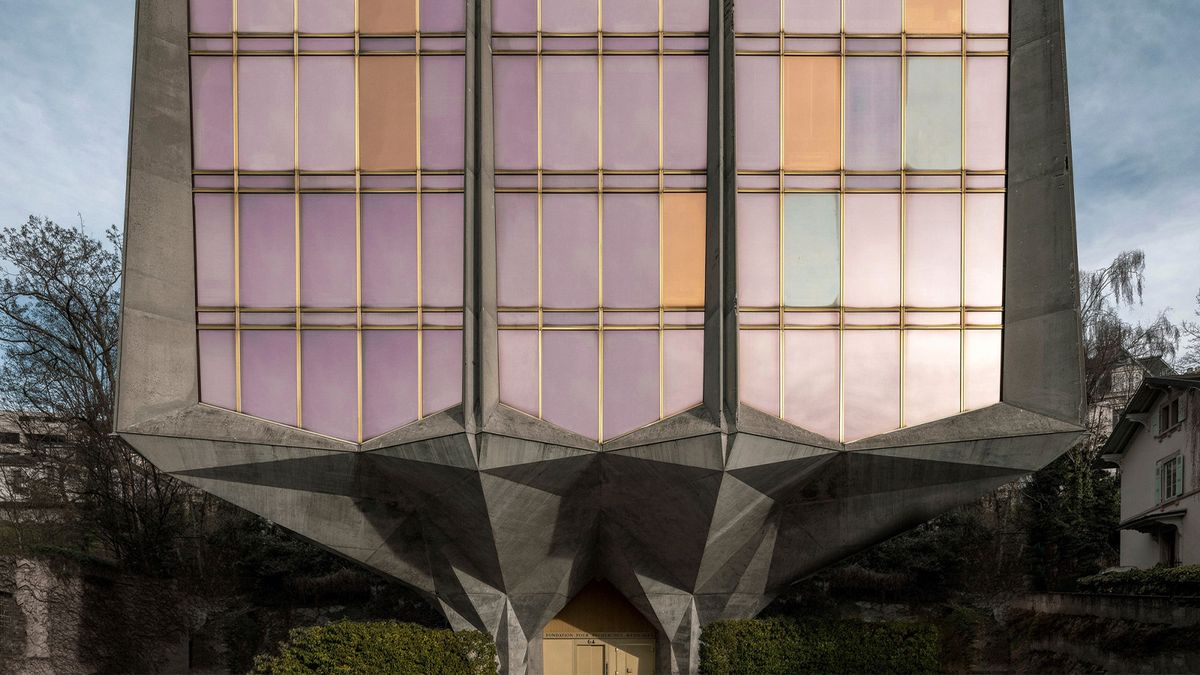Off Interstate 17, an hour north of Phoenix and two miles past a Love’s Travel Stop gas station, there’s a long dirt road that leads to ‘one of the most important experiments [in urban architecture] in our lifetime’, as a 1976 edition of Newsweek once described it – the sustainable architecture and urban experiment of Paolo Soleri (1919 – 2013), a prominent and also controversial figure of 20th-century architecture and urban planning. Arcosanti is a prototype in ’arcology’ – a style of architecture blended with ecology. It was Soleri’s response to the ills of urban existence: population growth, pollution, natural resource depletion, food scarcity, and poor quality of life. All are themes that remain acutely relevant to this day.
With its series of vaults and apses, integrated housing designed around low-tech, passive solar principles (as opposed to using technology), multi-use spaces with large circular windows framing views of cliffs and vast stretches of land, Arcosanti still embodies a ‘back-to-land’ vibe and connection to community that’s fuelled by an ideal for a better way to live. Since 1970, over 8,000 volunteers have come here, spending weeks, and sometimes decades, building, improving, and even raising families.
Photography: Jessica Jameson
’The first 50-years at Arcosanti were about one vision,’ says Liz Martin-Malikian, Arcosanti’s new CEO. ’The next 50 will be about the collective,’ she adds, referring to multiple collaborations and partnerships with Indigenous communities and beyond that contribute to her aim to ’decode the notion of arcology’.
‘All of the processes, symbols, and meanings represented by Arcosanti will become the elements of an arcology toolbox we are creating to explore issues of erosion, water collection, water management and community building,’ she says. ’The goal is to become the country’s first heat-ready community – equipped to survive a rapidly warming world.’
This is precisely what the students of The School of Architecture (TSOA), formerly Frank Lloyd Wright’s Taliesin West, are working on. TSOA’s headquarters are currently at Arcosanti, an irony not lost upon the older denizens of Arcosanti, who know the backstory – Soleri was expelled from Taliesin in 1949 by Frank Lloyd Wright himself.
Photography: Jeff Shewmon
Walking throughout the surrounding 800 acres of Arcosanti, you might pass a monumental block of rammed earth with layered striations of soil and sand or a Palaeolithic-looking earthen pod with a large oval oculus framing the pristine landscape. These aren’t archaeological artifacts. They are the TSOA students’ thesis shelter designs, focused on experimental sustainability for living and building in the desert. Historically, the student shelters accounted for the bulk of TSOA student housing. One of the TSOA students lives in the rammed earth dwelling now.
But in order for Malikian to begin to ’decode’ Soleri’s notion of arcology, she must first reframe her vision to the new cultural and political landscape and ask herself the question: ‘Is the practice of architecture fundamentally equitable?’ She explains: ’Diversity has to start with the reservation and the land surrounding Arcosanti.’ In pursuit of answers, Malikian will collaborate with Walla Dalla Costa, the head of Arizona State University’s Design Collaborative and a member of the Saddle Lake Cree Nation in Alberta, Canada. Dalla Costa has spent nearly 20 years working with Indigenous communities in North America.
Photography: David Blakeman
In the autumn of 2022, she’s rolling out the first Cosanti Indigenous Residency which will explore how Indigenous belief systems build and maintain connections with the land that go beyond just aesthetics and economics. Malikian is also spearheading an Indigenous co-design programme, called Equity in Co-designed Architecture, with three universities that are actively exploring the field. ‘[These programmes] will offer a new way to think of sustainability, combining passive design, regionalism, and climatic resiliency for future solutions,’ she says.
Soleri knew it was all about the land. It’s what first captivated him for his urban experiment and where he and his wife Colly are buried. Across a dry river bed, on top of a grassy knoll, there’s a 10 x 10 sq ft wrought iron fence. The wind caresses the native grass surrounding two small stone markers set in the earth. Beyond the graves, one can see Arcosanti on the ridge. The desert sky goes on forever. §
Pod created by Matt Windquist. Photography: Solomon Edelman
Cinders rammer earth structure, created by Matt Windquist. Photography: Jessica Martin
Octahedron created by Archie Kinney. Photography: Archie Kinney
http://dlvr.it/SLQkv8
Abonați-vă la:
Postare comentarii (Atom)
Step inside La Tulipe, a flower-shaped brutalist beauty by Jack Vicajee Bertoli in Geneva
Sprouting from the ground, nicknamed La Tulipe, the Fondation Pour Recherches Médicales building by Jack Vicajee Bertoli is undergoing a two...

-
Hedi Slimane pays tribute to the organic form of Jean Arp’s work Ptolémée II, in the latest itineration of the Celine Bijoux d’Artistes Proj...
-
The Sotheby’s Milan charity auction in aid of UNICEF takes place tomorrow, including 15 designs from the "Design to Move; 40 Creations ...
-
Mareterra, a Monaco project boasting contributions by Renzo Piano, Norman Foster, Stefano Boeri and Tadao Ando, is set to become a new neigh...

Niciun comentariu:
Trimiteți un comentariu